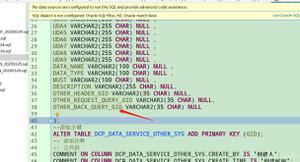查找链表中所有元素出现次数的 Python 程序
当需要查找链表中所有元素出现的次数时,向链表添加元素的方法、打印元素的方法和查找链表中所有元素出现的方法是定义。
以下是相同的演示 -
示例
class Node:输出结果def __init__(self, data):
self.data= data
self.next= None
class LinkedList_structure:
def __init__(self):
self.head= None
self.last_node= None
def add_vals(self, data):
ifself.last_nodeis None:
self.head = Node(data)
self.last_node = self.head
else:
self.last_node.next = Node(data)
self.last_node = self.last_node.next
def print_it(self):
curr = self.head
while curr:
print(curr.data)
curr = curr.next
def count_elem(self, key):
curr = self.head
count_val = 0
while curr:
ifcurr.data== key:
count_val = count_val + 1
curr = curr.next
return count_val
my_instance = LinkedList_structure()
my_list = [56, 78, 98, 12, 34, 55, 0]
for elem in my_list:
my_instance.add_vals(elem)
print('The linked list is : ')
my_instance.print_it()
key_val = int(input('Enter the data item '))
count_val = my_instance.count_elem(key_val)
print('{0} occurs {1} time(s) in the list.'.format(key_val, count_val))
The linked list is :56
78
98
12
34
55
0
Enter the data item 0
0 occurs 1 time(s) in the list.
解释
创建了“节点”类。
创建了另一个具有所需属性的“LinkedList_structure”类。
它有一个 'init' 函数,用于初始化第一个元素,i.e即 'head' 为 'None'。
定义了一个名为“add_vals”的方法,它有助于向堆栈添加一个值。
定义了另一个名为“print_it”的方法,它有助于在控制台上显示链表的值。
定义了另一个名为“count_elem”的方法,它有助于查找链表中每个字符的出现。
'LinkedList_structure' 的一个实例被创建。
定义了一个元素列表。
遍历列表,并将这些元素添加到链表中。
元素显示在控制台上。
'count_elem' 方法在这个链表上被调用。
输出显示在控制台上。
以上是 查找链表中所有元素出现次数的 Python 程序 的全部内容, 来源链接: utcz.com/z/345815.html




